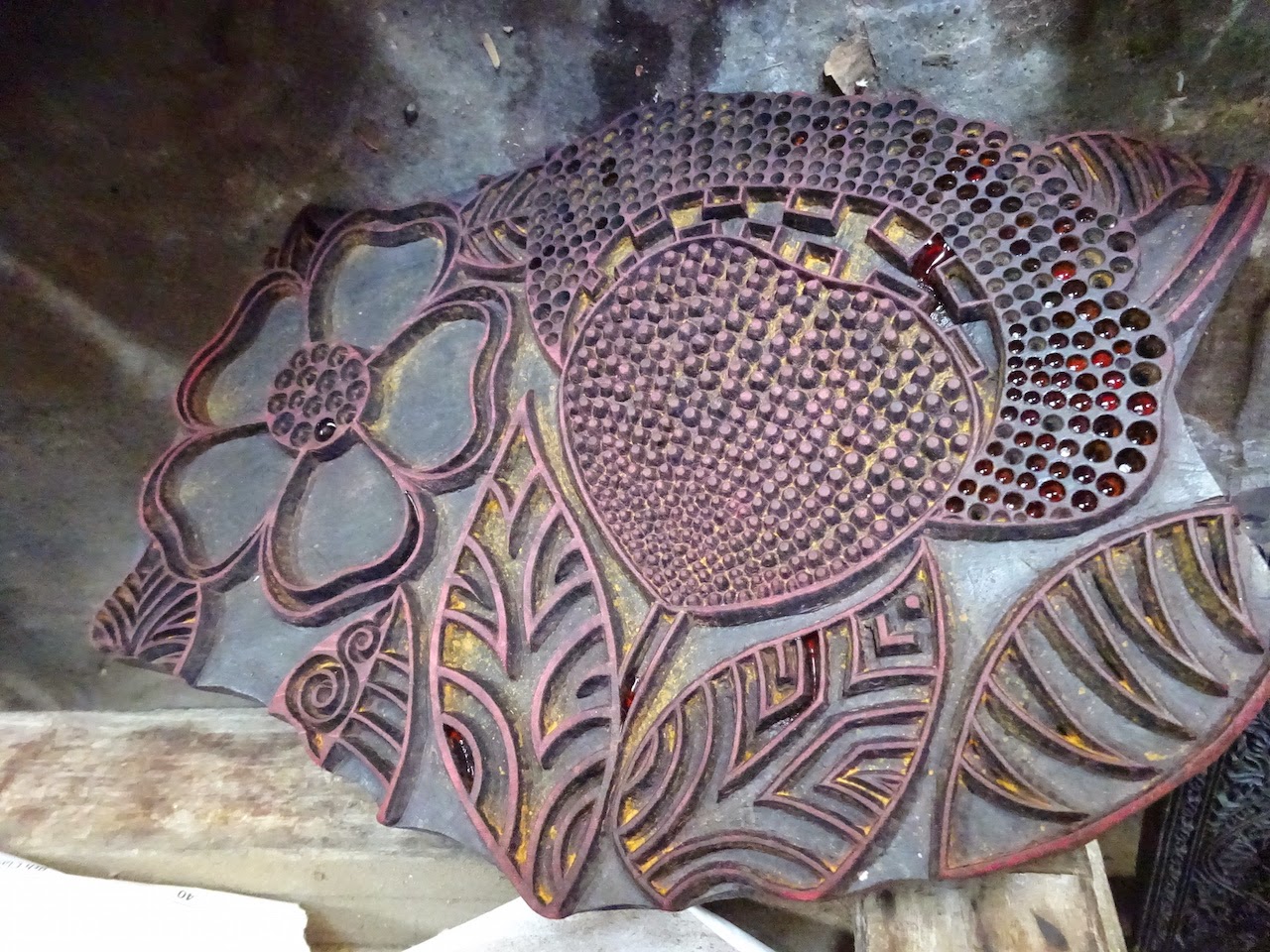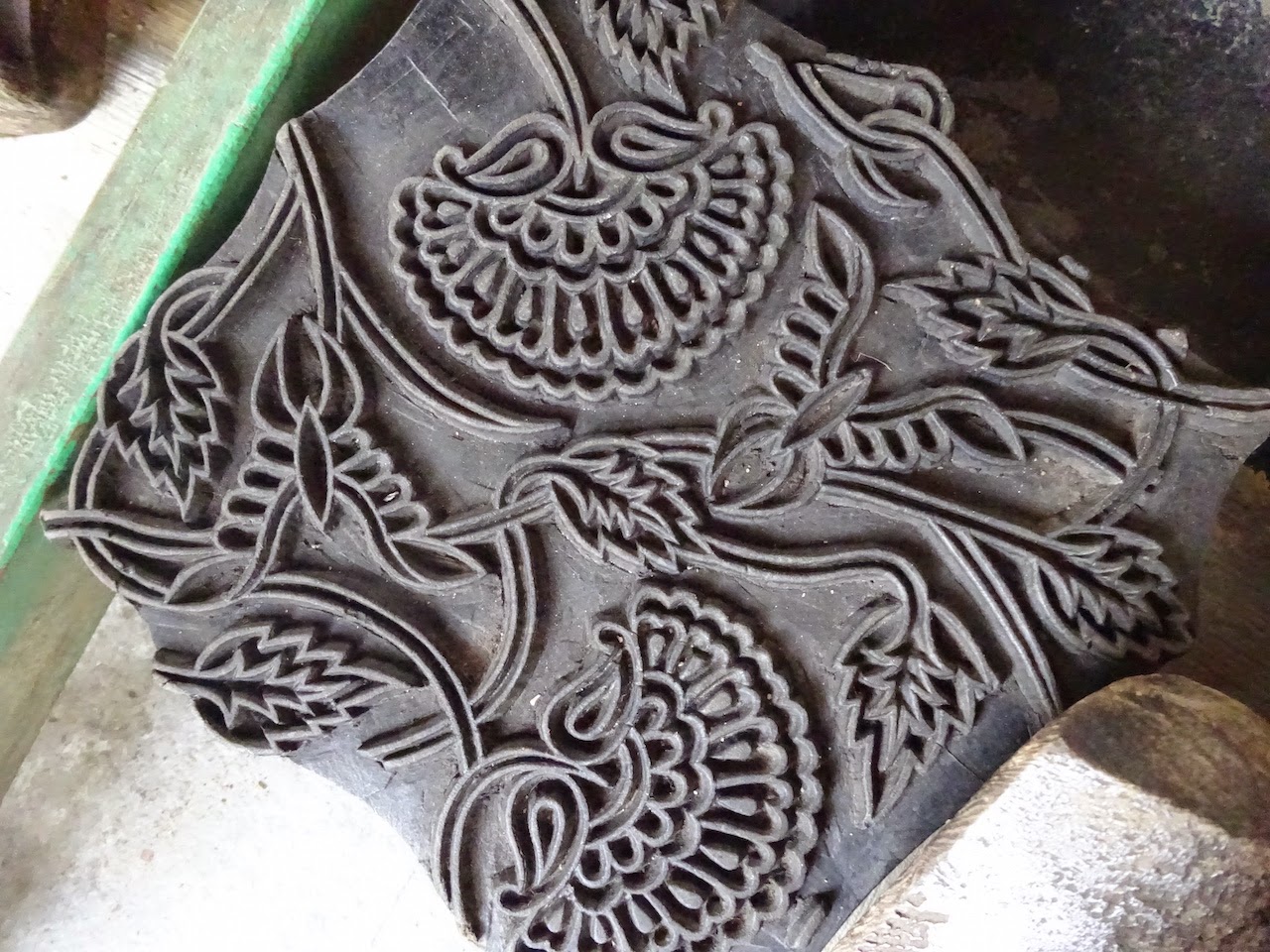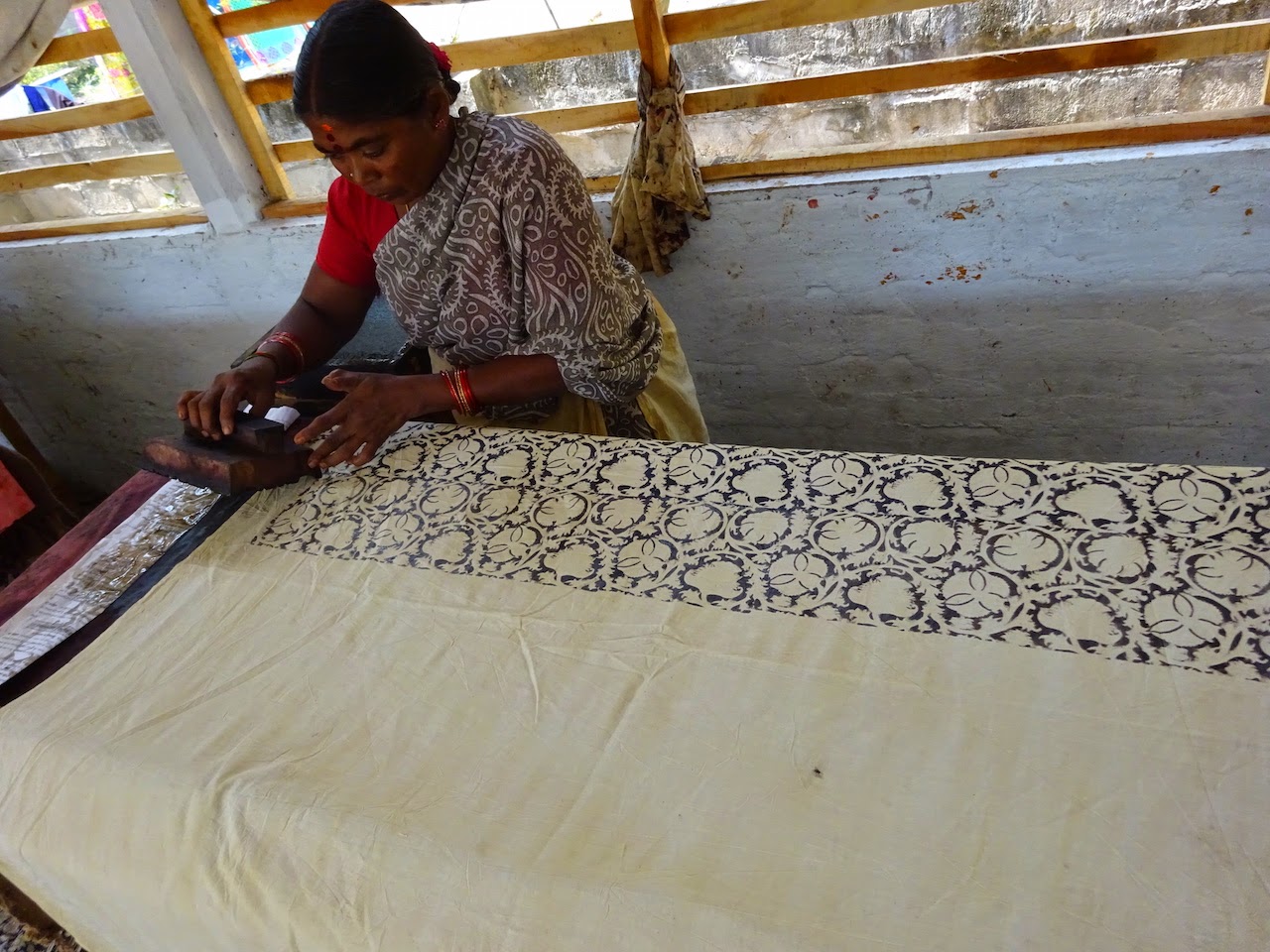Pedana is a small town just 13 km from Machilipatnam, and 73 km from vijayawada the Krishna district headquarters in coastal Andhra Pradesh. This small place has carved a niche for itself with its own style-- Kalamkari textile materials.
Over 1,000 artisan families survive on making vegetable dyes, blocks and printing distinctive Kalamkari textiles, including bedsheets, lungis, kerchiefs, curtains, sarees & dress materials.
The Machilipatnam Kalamkari craft, made at Pedana, evolved with patronage of the Mughals and in the later years, the Golconda sultanate. “The word Kalamkari means, drawing with a pen. But our style is different from that of the Srikalahasti style or Pen Kalamkari,”
 |
| BLOCK DESIGN |
Here are few Classical touch of Kalamkari design blocks
 |
| Storage of design blocks |
 |
| BORDER DESIGNS ON BLOCK |
 |
 |
| storage of design blocks |
Artistes in Pedana use vegetable dyes and colours as they are pure and organic and have absolutely no side effects on users or the environment. Vegetable dyed fabrics and other items are more beautiful, popular and costlier than the regular products available in the market today. The reason is that it takes longer time and great effort to prepare vegetable dyes.
All vegetable colours are made using minerals, leaves, flowers and bark of different trees. For instance, distinctive red colour, a kind of trade mark for Kalamkari, is derived from a solution of alum and tamarind seed powder. Tamarind seed powder is boiled till it mixes well with water and then it is left to cool down to the normal temperature. The solution is then filtered using a muslin cloth. Alum works as the colour fixer for the solution.

Iron ore is used to make the black dye. The ore is powdered and boiled to make a solution. Process of cooling and filtering is involved while making all vegetable dyes. When the dye is ready, it is directly applied onto the pattern with a wooden block.
“For 20 kg of iron we use 15 kg of jaggery and 25 litre of water,”
Similarly, violet colour is made out of natural indigo crystals. They are powdered and boiled to make a solution, yellow from turmeric and harad கடுக்காய்(Kadukkai) are used to make
yellow, mustard, lemon yellow and other tints and shades of yellow.
People all over the world have understood the harmful effects of dangerous chemical dyes and developing the taste for naturally dyed fabrics. Kalamkari painting is the best specimen of natural colour artwork. The artists use natural colours extracted from bark, flower and roots of plants. No chemical dyes are used for Kalamkari colours.
 |
The fabric is then treated in Myrobalan solution of ripe fruits and milk to prevent the color spreading in the next step.
|
Along with buffalo milk, myrobalan is also used in Kalamkari. Myrobalan removes the odd smell of buffalo milk. The myrobolan can easily fix the dye or colour of the textile while treating the fabric. Alum is used in making natural dyes and also while treating the fabric. Alum ensures the stability of the colour in Kalamkari fabric.
The cotton fabric, made in powerloom with a certain weft and warp comes mostly from Tamil Nadu and Maharashtra.
 |
The wooden blocks are made as per the design given “Generally the design made on paper is copied on the wooden blocks. Carving is done with improvised instruments made out of car valves, fan bearings and foundry equipment. I prefer rosewood as it is hard. Teakwood blocks wear off very fast. Also, carving needs special skills and patience,”. After the printing is done with the help of these blocks, colours are put carefully. Later, the cloth is dipped in water for a while to help colours to get properly absorbed in the fabric.
 |
Bright and bold colors are used on the fabric but the finish is not loud. The further washing of the fabric enhances the designs and they standout even better against the background.
|
 |
| myself just looking on the printing process |

Color fixing
Along with buffalo milk, Myrobalan is used in Kalamkari. Myrobalan is also able to remove the odd smell of buffalo milk. The fixing agents available in the Myrobolan can easily fix the dye or color of the textile while treating the fabric. Alum is used in making natural dyes and also while treating the fabric. Alum ensures the stability of the color in Kalamkari fabric.


















































This is a very good article to spread knowledge about Kalamkari Art. Congratulations. B. Ganga Raju Hyderabad
ReplyDeleteNice article, beautiful pics and so tempting !!
ReplyDelete